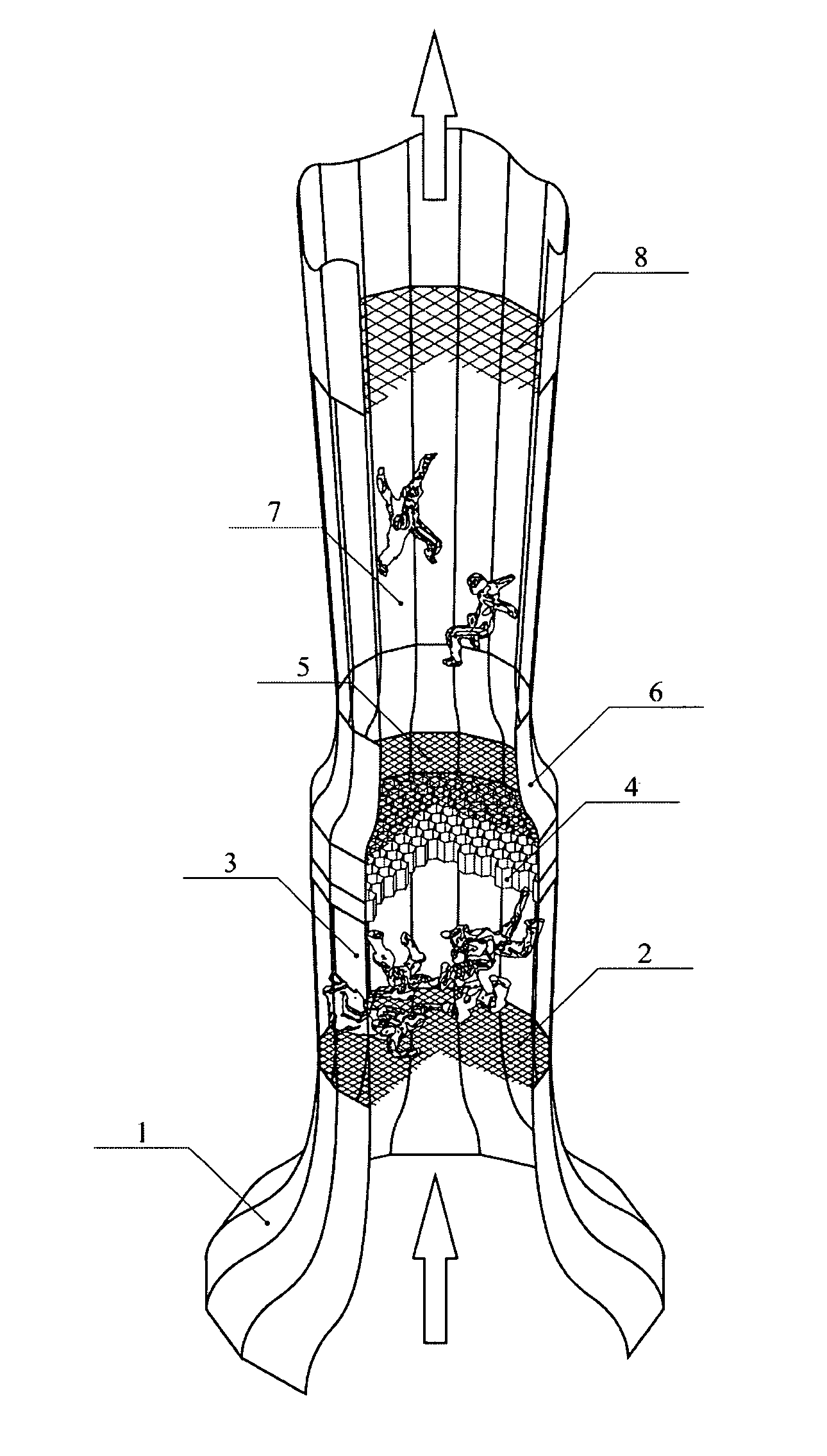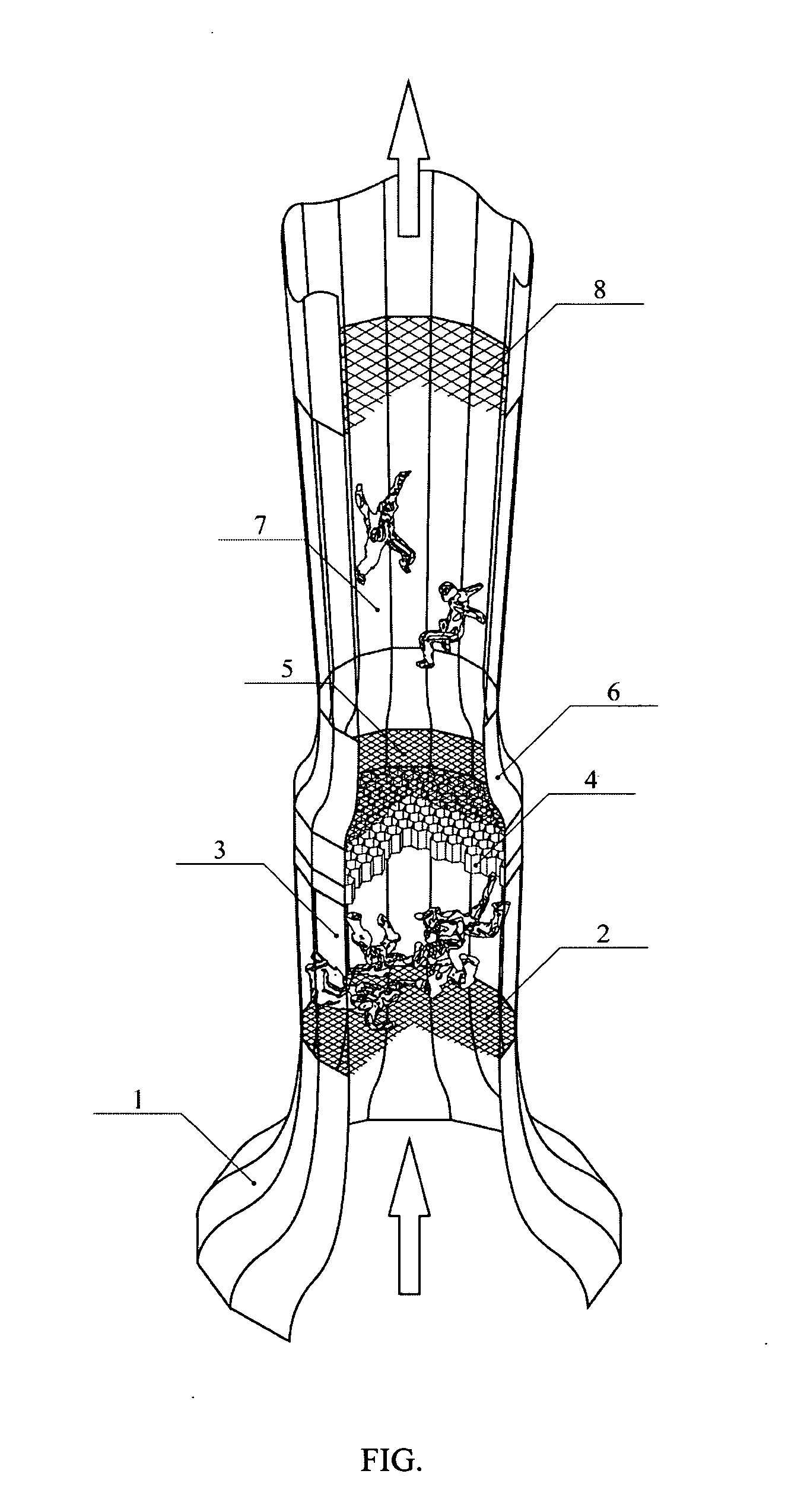Wind tunnel for training parachutists
a wind tunnel and parachutist technology, applied in the field of aerodynamics, can solve the problems of long-axis displacement of parachutists, habituation to harmful reflexes, and affect the team's performan
- Summary
- Abstract
- Description
- Claims
- Application Information
AI Technical Summary
Problems solved by technology
Method used
Image
Examples
Embodiment Construction
[0045]While the invention may be susceptible to embodiment in different forms, there is shown in an appended drawing figure (FIG.), and will be described in detail herein, a specific embodiment of the present invention, with the understanding that the present disclosure is to be considered an exemplification of the principles of the invention, and is not intended to limit the invention to that as illustrated and described herein.
[0046]The concept of the invention is graphically illustrated on the FIG. in the form of a diagram of the inventive wind tunnel.
[0047]The wind tunnel comprises: an entrance confusor 1, an entrance safety net 2, a first working zone 3, a honeycomb 4, an intermediate safety net 5, an intermediate confusor 6, a second working zone 7 and an exit safety net 8.
[0048]The wind tunnel operates in the following way: a ventilator set (it is not depicted on the FIG.) creates a pressure differential, which causes the air to move within the tunnel contour upward. In the e...
PUM
 Login to View More
Login to View More Abstract
Description
Claims
Application Information
 Login to View More
Login to View More - R&D
- Intellectual Property
- Life Sciences
- Materials
- Tech Scout
- Unparalleled Data Quality
- Higher Quality Content
- 60% Fewer Hallucinations
Browse by: Latest US Patents, China's latest patents, Technical Efficacy Thesaurus, Application Domain, Technology Topic, Popular Technical Reports.
© 2025 PatSnap. All rights reserved.Legal|Privacy policy|Modern Slavery Act Transparency Statement|Sitemap|About US| Contact US: help@patsnap.com


